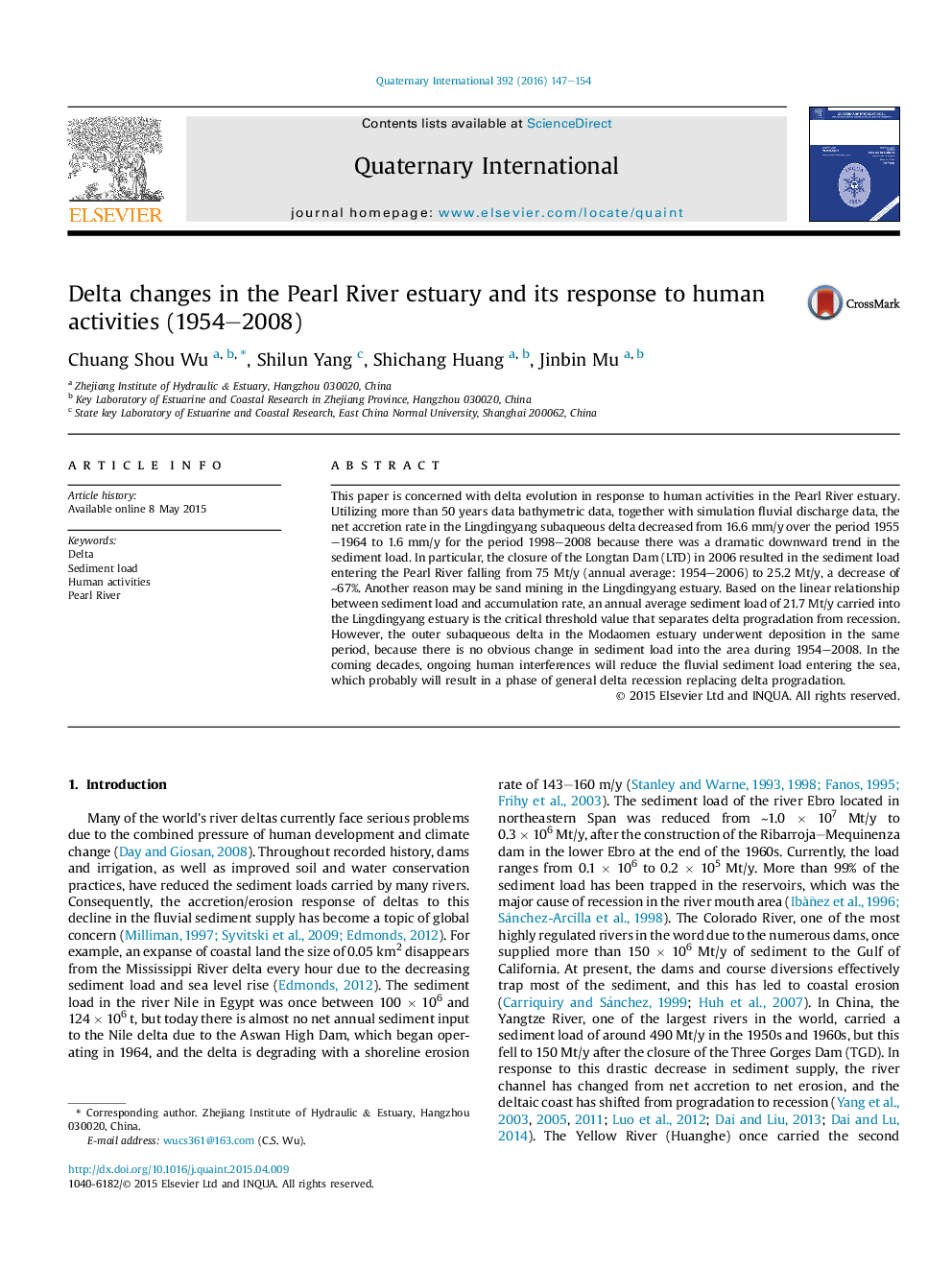| Article ID | Journal | Published Year | Pages | File Type |
|---|---|---|---|---|
| 1040392 | Quaternary International | 2016 | 8 Pages |
This paper is concerned with delta evolution in response to human activities in the Pearl River estuary. Utilizing more than 50 years data bathymetric data, together with simulation fluvial discharge data, the net accretion rate in the Lingdingyang subaqueous delta decreased from 16.6 mm/y over the period 1955–1964 to 1.6 mm/y for the period 1998–2008 because there was a dramatic downward trend in the sediment load. In particular, the closure of the Longtan Dam (LTD) in 2006 resulted in the sediment load entering the Pearl River falling from 75 Mt/y (annual average: 1954–2006) to 25.2 Mt/y, a decrease of ∼67%. Another reason may be sand mining in the Lingdingyang estuary. Based on the linear relationship between sediment load and accumulation rate, an annual average sediment load of 21.7 Mt/y carried into the Lingdingyang estuary is the critical threshold value that separates delta progradation from recession. However, the outer subaqueous delta in the Modaomen estuary underwent deposition in the same period, because there is no obvious change in sediment load into the area during 1954–2008. In the coming decades, ongoing human interferences will reduce the fluvial sediment load entering the sea, which probably will result in a phase of general delta recession replacing delta progradation.
